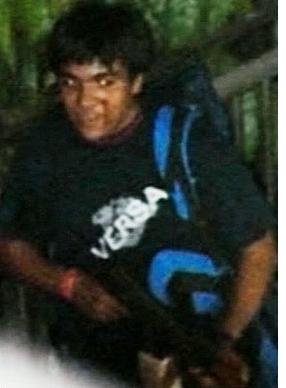It was like just another formality in the Sino-Indian relationship being fulfilled, as the Chinese Prime Minister Wen Jiabao concluded his “significant” “trust-building” India visit on Friday. The Chinese Premier brought along a huge entourage of 400 business leaders to India, signaling the only purpose of his visit – more business. India and China signed six business deals, announced plans to increase business to $100 billion by 2015 and established a Strategic Economic Dialogue. PM Wen Jiabao also announced that Indian and Chinese companies would be signing deals worth $16 billion. But at the end of three day tour, the fact remains that there is a huge trade deficit and imbalance between India and China, and no concrete announcements to reduce or eliminate it were made.
The trade between the two countries has almost tripled since 2005 and today stands at $60 billion. But India’s trade deficit with China is about $19 billion this year alone. This is explained by the two fold increase in Indian exports to China between 2005 and 2010($11.6 billion) and three-fold increase in Chinese exports to India ($30.8 billion). India has been largely exporting raw materials to China, and importing finished goods made mostly from the same raw materials. This pattern of trade, even if it results in large numbers for cumulative trade, is not good for Indian interests and business. Not to mention the large dumping of Chinese goods into India that damages local manufacturing, and against which India has launched various complaints with the WTO. Further, Chinese FDIs in India are only $52 million, whereas since 2005 Indian FDIs into China have been $879 million.
In the backdrop of this trade imbalance it would have been expected that the Indian side would demand and negotiate constructive mechanisms to reduce the trade deficit and balance out the balance sheet. However, the joint statement by the two leaders only made ambiguous references to working towards improving trade. Neither were there any signs of China conceding ground or supporting Indian in case of some of the other contentious issues such as the stapled visa for Kashmiri residents, terrorism emanating from Pakistan, China-Pak nuclear deal and dam on the Brahmaputra. Even during the Foreign Secretary’s Press Briefing her answers to these questions were full of diplomatic jargon and ambiguity, leaving one to conclude that India could not squeeze out even one favorable comment on contentious issues from China.
Wen Jaibao’s visit was symbolic of the ‘cordial’ imbalanced relationship between the two countries. The Indian government’s reactions and remarks showed more a willingness and desire on its part to not antagonize the Chinese and maintain status quo, rather than stand up for its rightful claims and risk retaliatory actions by the Chinese in international forums or along the borders. It is unfortunate that in spite of the much touted personal rapport between Manmohan Singh and Wen Jiabao, home-ground benefit, India’s growing clout in the world, and two recent successful visits by President Obama and President Sarkozy, India could not stand up for its demands and make its presence felt during this Chinese visit. It is time, after 60 years of being together, that India steps up its game, and works towards not improving relations, but developing a mature relationship with China where it does not play second fiddle and pussyfoot around it.
(This post originally appeared at the FPA’s India blog.)

 But this attack is very different from the horrific attack on Mumbai by commandos from Pakistan in November 2008. The attack on Mumbai was NOT terrorism, but a totally different operation. It was an exquisitely planned and flawlessly executed attack by professionally trained commandos armed with an arsenal of lethal weapons. Prior to the attack, the supporting cadres had scouted the targets, established base camps in nondescript buildings, and stockpiled on weapons and support material. The attackers traveled from Karachi to Mumbai in trawlers; they came ashore in inflatables in isolated portions off the Mumbai coastline at night, and went quietly to their planned rendezvous points. Then, like clockwork, they carried out their mission.
But this attack is very different from the horrific attack on Mumbai by commandos from Pakistan in November 2008. The attack on Mumbai was NOT terrorism, but a totally different operation. It was an exquisitely planned and flawlessly executed attack by professionally trained commandos armed with an arsenal of lethal weapons. Prior to the attack, the supporting cadres had scouted the targets, established base camps in nondescript buildings, and stockpiled on weapons and support material. The attackers traveled from Karachi to Mumbai in trawlers; they came ashore in inflatables in isolated portions off the Mumbai coastline at night, and went quietly to their planned rendezvous points. Then, like clockwork, they carried out their mission. It is a characteristic of wolves to attack sheep. Where would you find wolves? You would look to the poor, destitute areas of Pakistan-Pashtunistan. No shortage there of young men who, for a relatively small amount of money, could be trained in military combat, bomb-making and other terrorist activities. These men could be infiltrated into India for specific missions, a simple task given Indian complacency and laxness. If these young men are successful, mission accomplished. If these young men fail, no harm done as long as the masterminds could claim plausible deniability.
It is a characteristic of wolves to attack sheep. Where would you find wolves? You would look to the poor, destitute areas of Pakistan-Pashtunistan. No shortage there of young men who, for a relatively small amount of money, could be trained in military combat, bomb-making and other terrorist activities. These men could be infiltrated into India for specific missions, a simple task given Indian complacency and laxness. If these young men are successful, mission accomplished. If these young men fail, no harm done as long as the masterminds could claim plausible deniability.